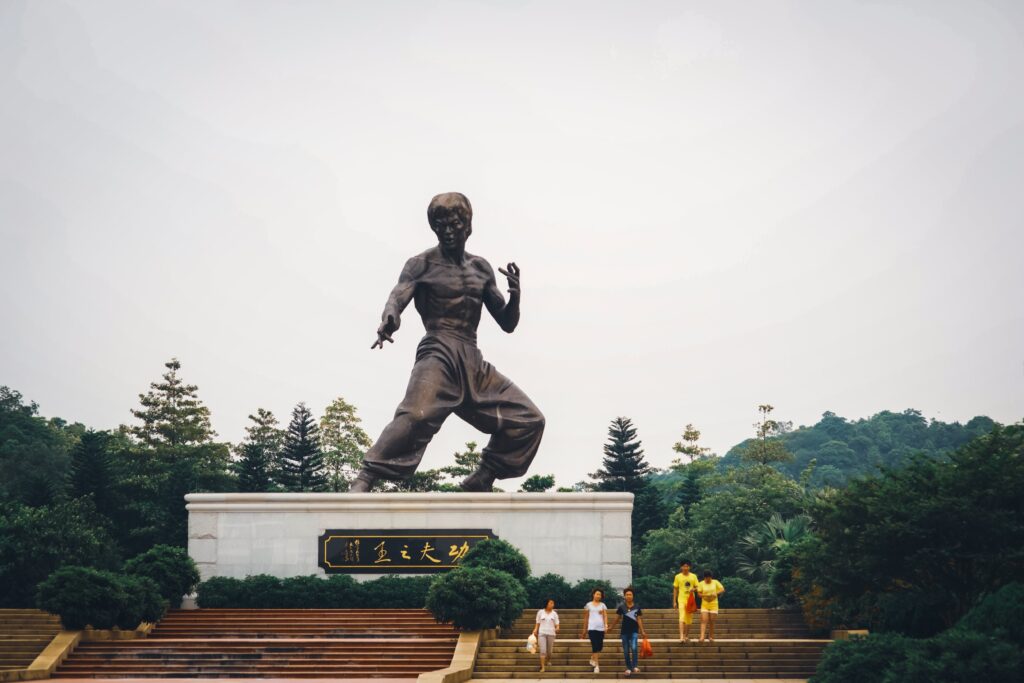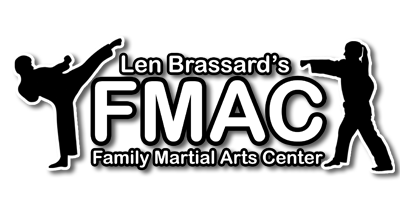A nonviolent approach is the best lesson learned in karate.
The martial art form that originated in Okinawa, Japan, is often misunderstood as a discipline promoting violence and aggression. However, the true essence of karate lies not in the power of the attack but in the strength of one’s character, self-control, and the pursuit of peace. This can be difficult to accept and easy to negate and debate if you’ve ever seen the bloodied and torn Bruce Lee in Hollywood B films like “Enter The Dragon” and “Fists of Fury.”
Shall we dance?
In truth, lifelong Masters of the Arts, like Bruce Lee, can also be considered as dance choreographers, not as fight directors. Take a close look at the fluid transitions from one move to another, the rhythm, and the balance required in performing a kata; all mirror the elements of a dance.
The stances, strikes, kicks, and blocks are not just physical actions but a form of expressive dance that tells a story of discipline, respect, and harmony. The kata, a sequence of choreographed movements performed in a pattern, is a perfect example of the dance in karate. It is a solo performance where the practitioner imagines fighting multiple opponents from different directions.
Perhaps that was behind the reason Bruce Lee was in the famous mirror scene in “Enter The Dragon” when his character was faced with finding his opponent in the fragmented dance stage, defending himself from a hidden foe while also trying to perfect his combat moves. A perfection shown in a room full of looking glass is the ballroom akin to the Droste effect of fractalism.

● The beauty of this dance is also reflected in the philosophy of karate. It emphasizes respect, discipline, and a constant journey of self-improvement.
● The dance-like movements in karate are not just about physical prowess but also about cultivating a strong, disciplined mind and a respectful, humble spirit.
● The dance behind karate is a dance of balance – balance between strength and flexibility, speed and control, power and grace.
● It is a dance that celebrates the human spirit’s resilience, the body’s capabilities, and the mind’s discipline. In essence, the beauty of the dance behind karate is a testament to the harmony between the body, mind, and spirit. It is a dance that transcends the physical realm and delves into the spiritual; karate is not just a martial art but a way of life.
Active peace resembles self-confidence.
The philosophy of karate is deeply rooted in the principles of peace and anger control. It is not about learning how to fight, but rather learning how not to fight. It is about understanding that violence is the last resort, to be used only when all other options have been exhausted. The importance of peace in karate is a fundamental principle. It is not just about the absence of conflict but also about maintaining a state of inner tranquility and harmony. Karate teaches its practitioners to be at peace with themselves and their surroundings.
This peace is not passive; it is an active state of being that requires constant effort and discipline. Karate is not about winning fights but about avoiding them. It teaches its practitioners to be aware of their surroundings, to anticipate potential conflicts, and to defuse them before they escalate. This is the true strength of a karateka (a karate practitioner) – the ability to maintain peace in the face of potential conflict.
Anger control and karate anger
We’ve established that karate arts are powerful emotions that can easily lead to violence if not properly managed. Karate teaches its practitioners to control their anger, not by suppressing it, but by understanding it. It encourages them to explore the root cause of their anger, understand why they are feeling this way, and find constructive ways to express it.
Karate provides a physical outlet for anger, allowing its practitioners to channel their energy into their training rather than into destructive behavior. It also teaches them to remain calm and composed under pressure, to think clearly, and to make rational decisions even in the heat of the moment.
Out of options
Despite its martial nature, karate emphasizes that physical confrontation should always be the last resort. It teaches its practitioners to use their skills defensively, not offensively. The goal is not to harm but to protect – to protect oneself and to protect others. Karate is not about violence but about control – control over one’s body, one’s mind, and one’s emotions. It is about understanding that the greatest victory is not defeating an opponent but overcoming one’s own weaknesses.
In conclusion, karate is a discipline that promotes peace and anger control. It is a path of self-improvement and personal growth, a journey towards becoming a better, more balanced individual. It is a reminder that true strength lies not in the power of one’s fists but in the strength of one’s character. Are you strong enough to face the mirror and dance?
